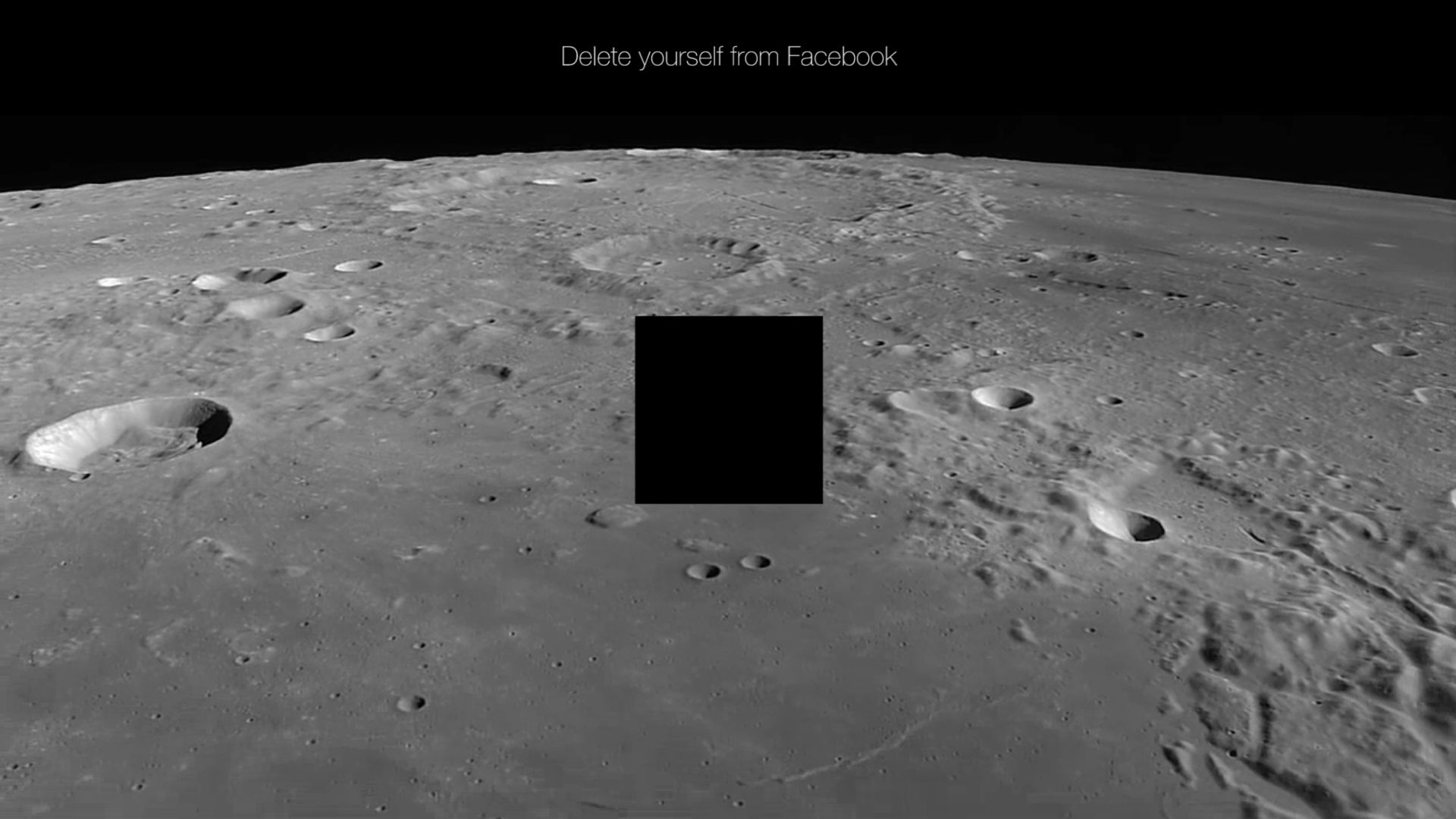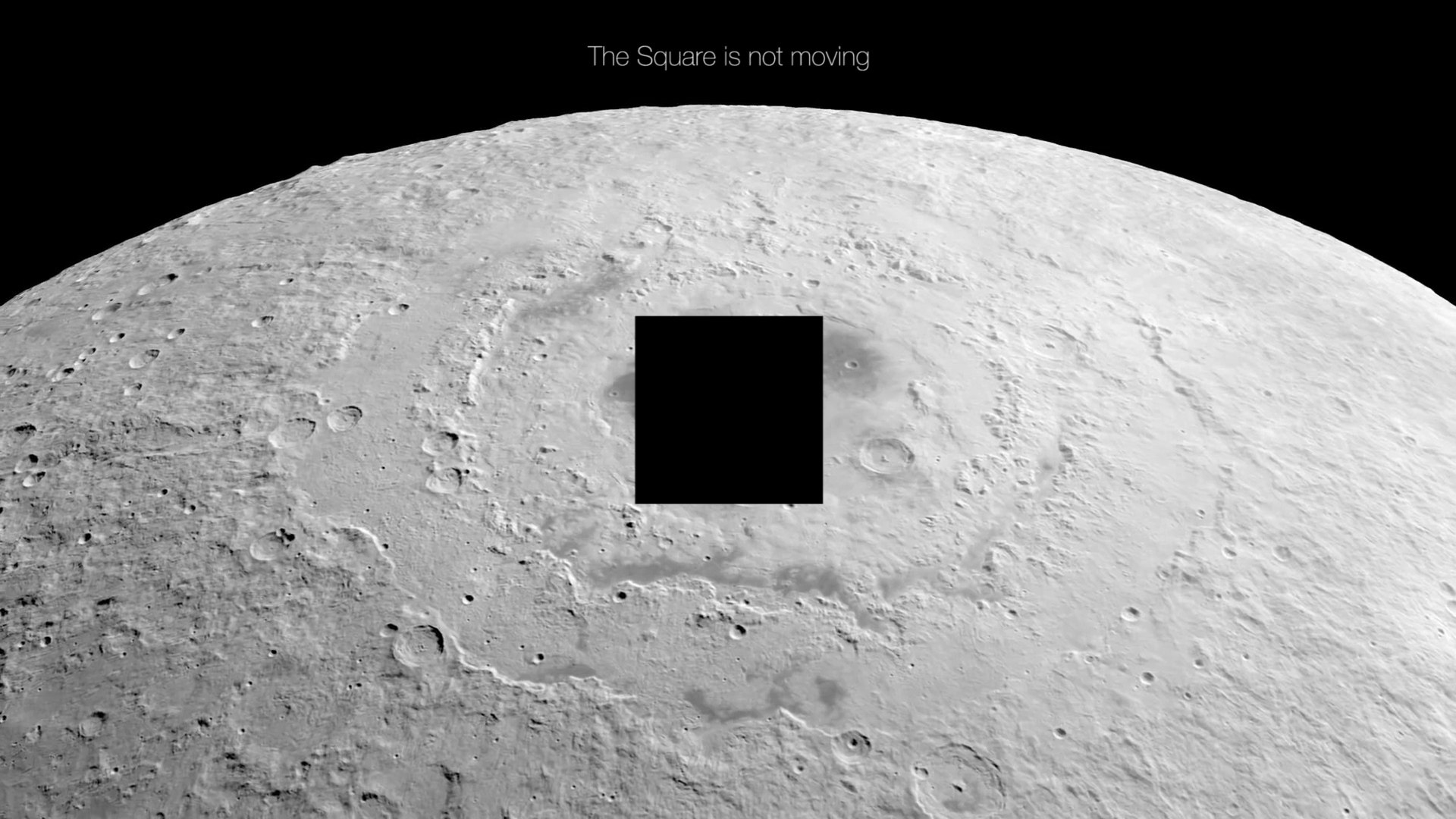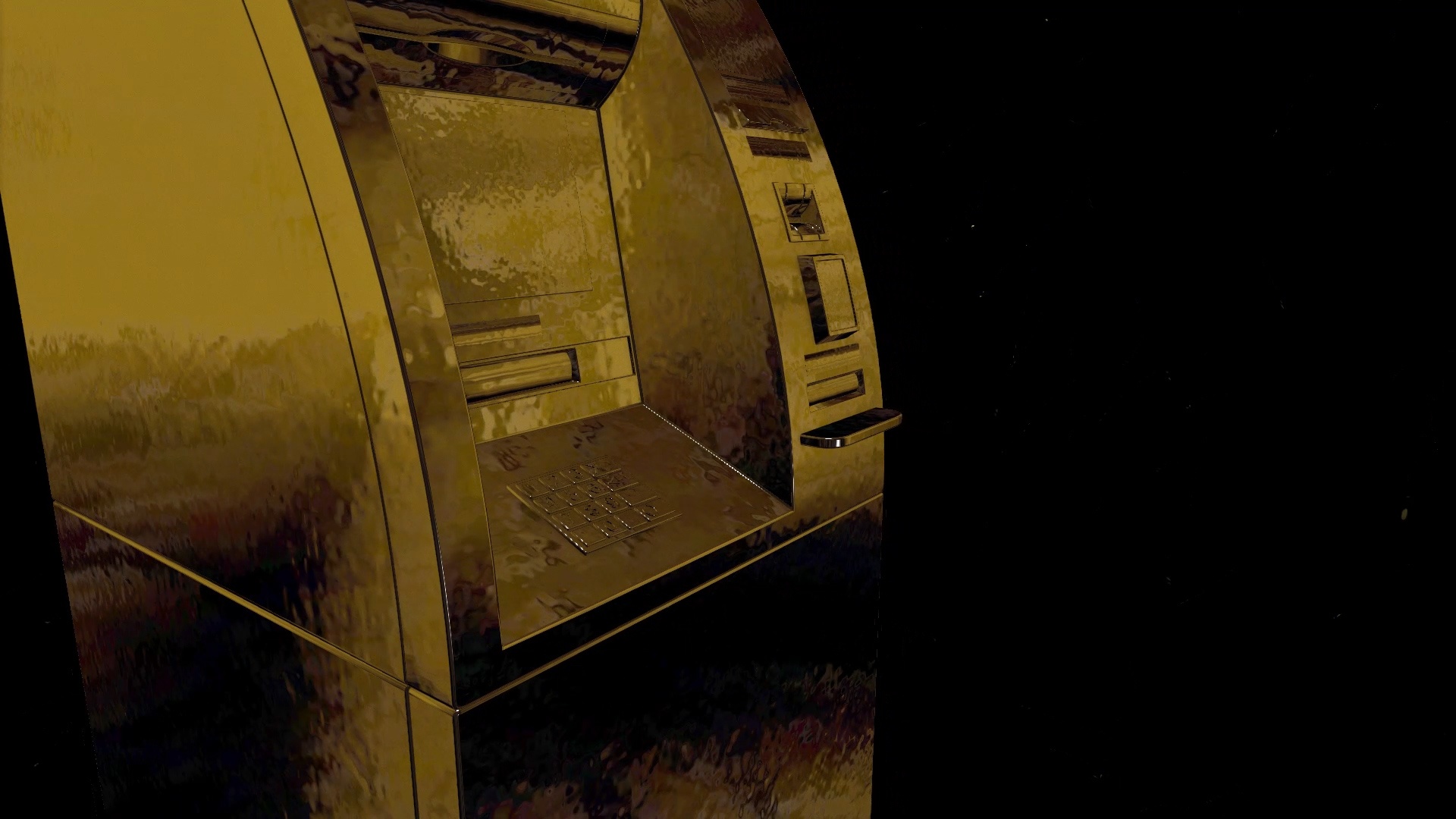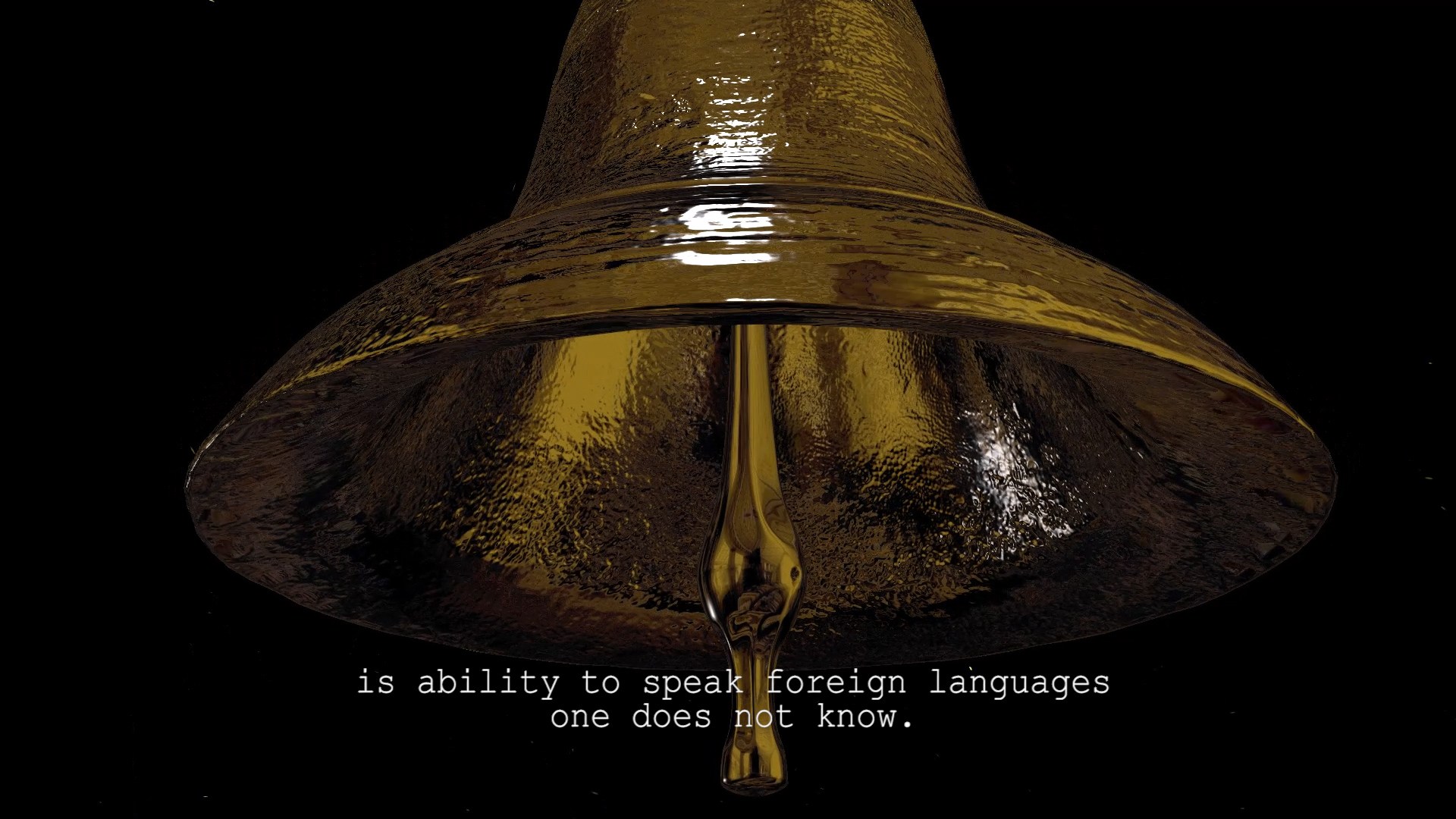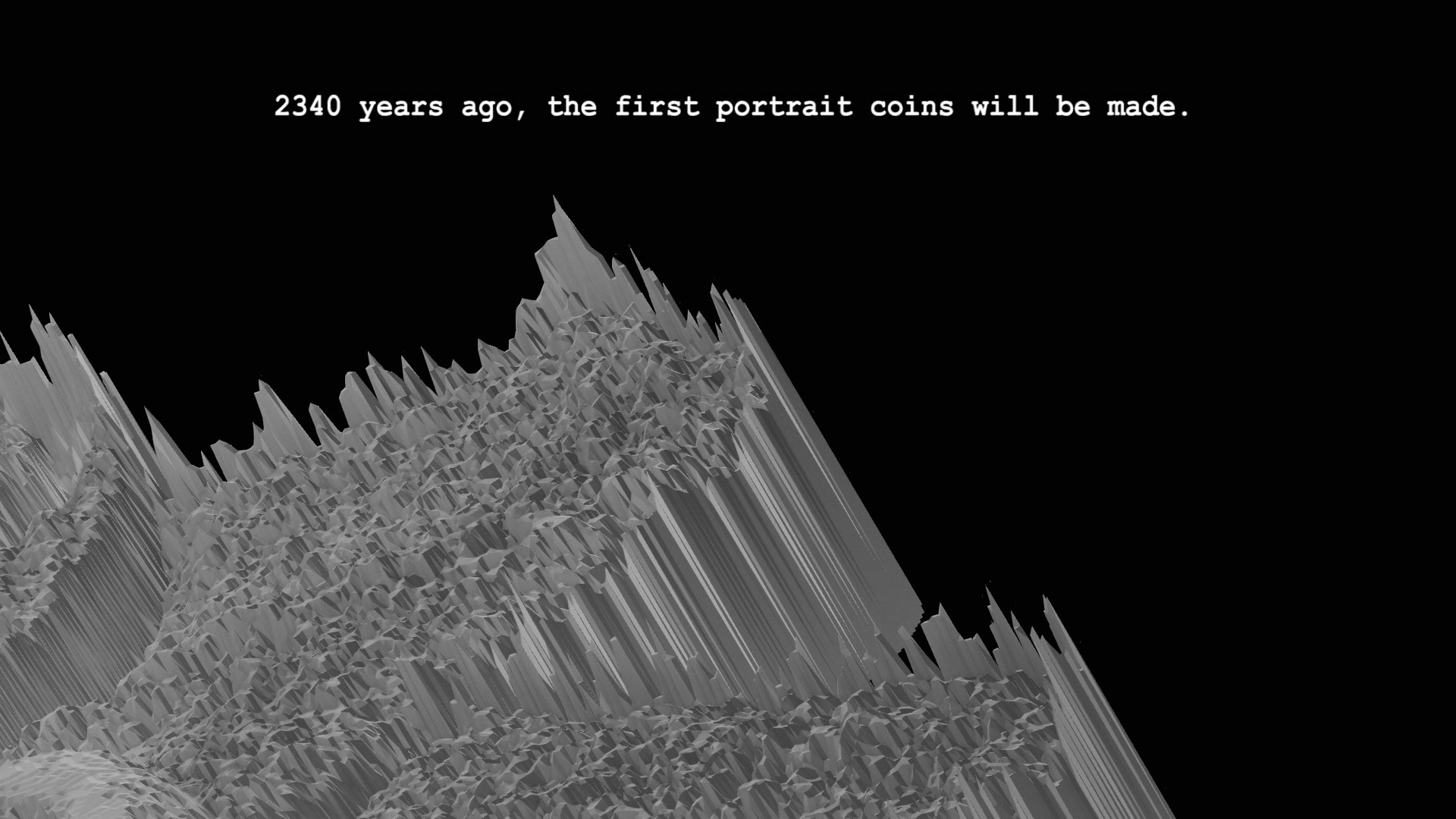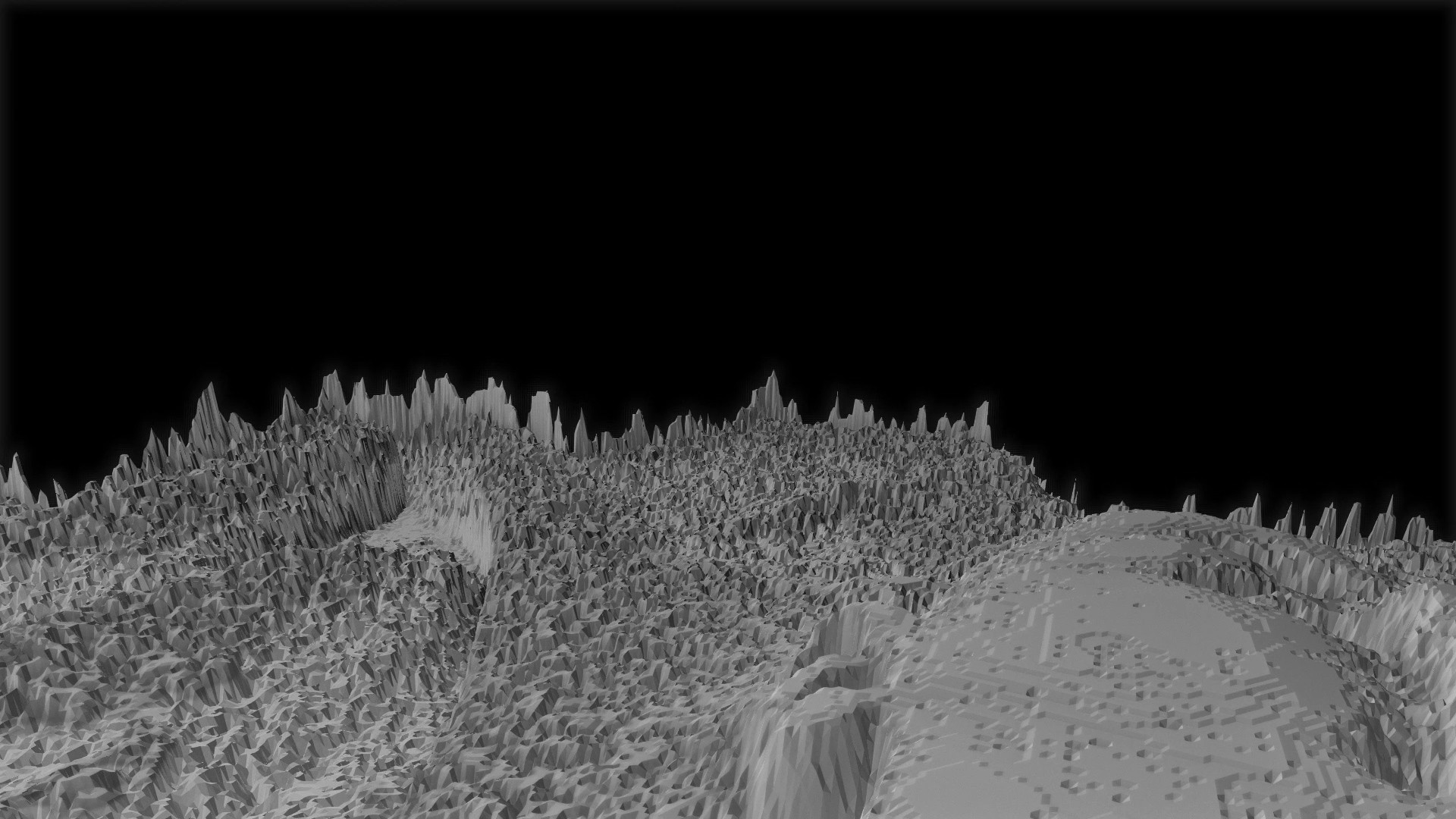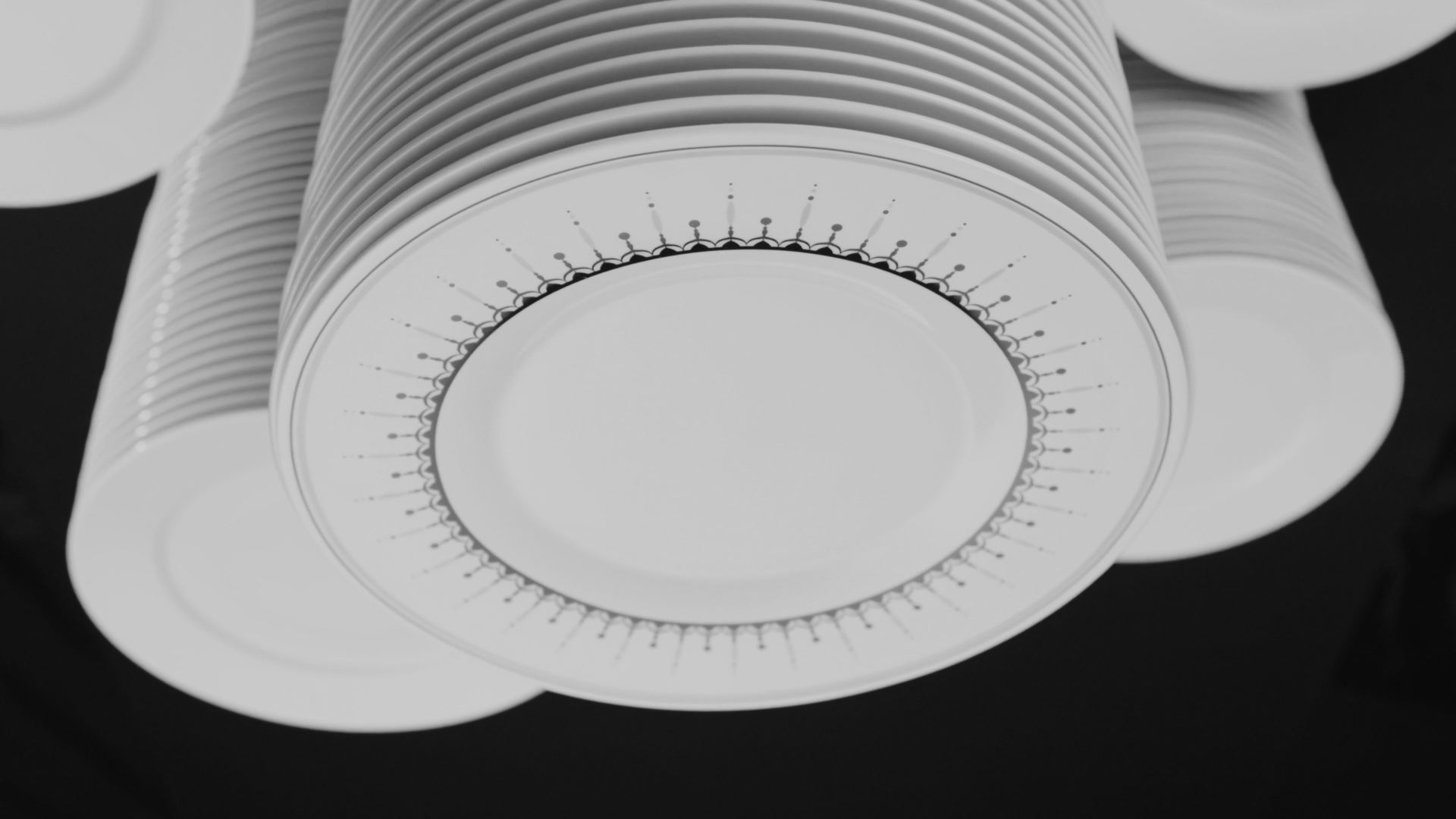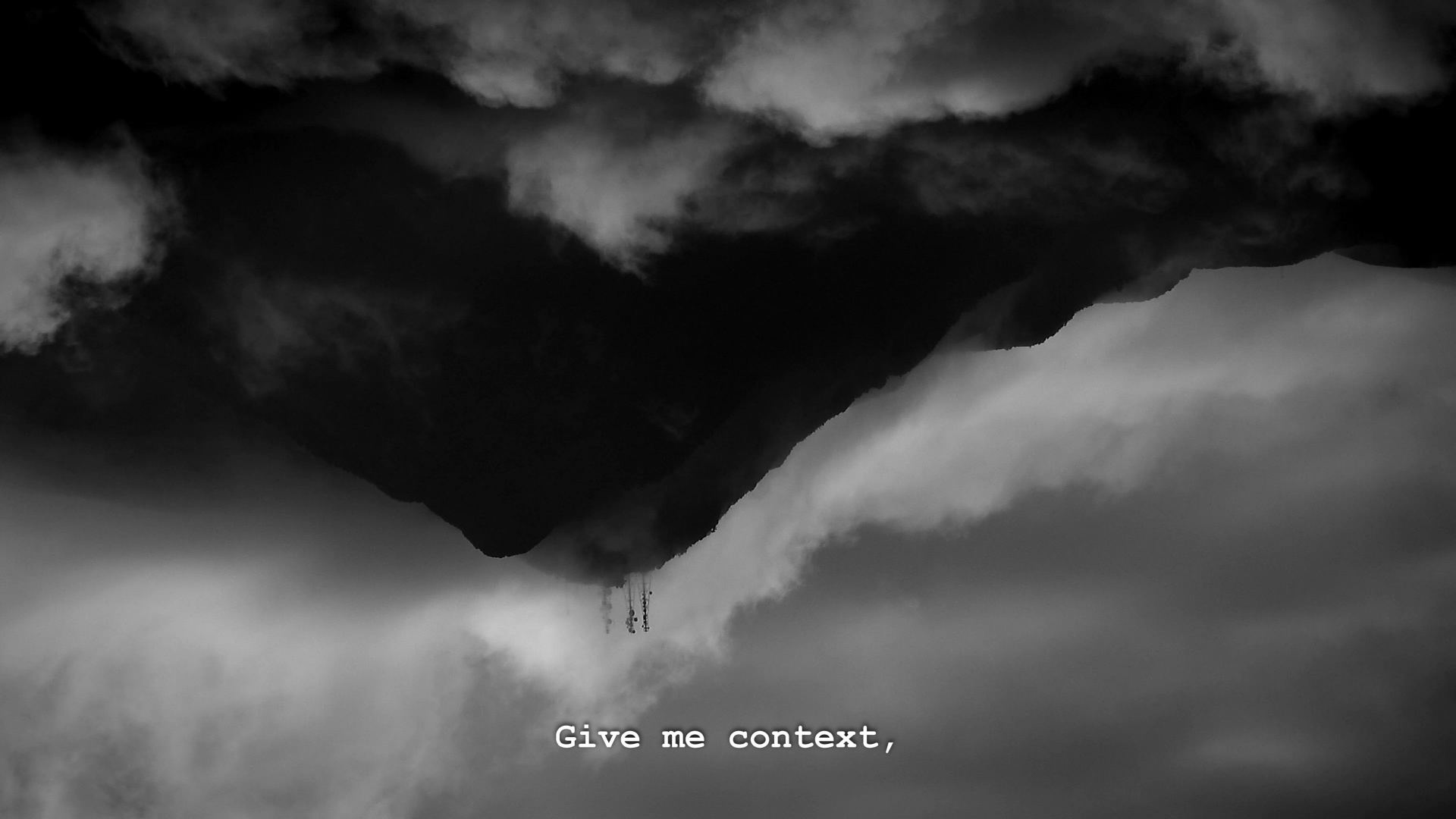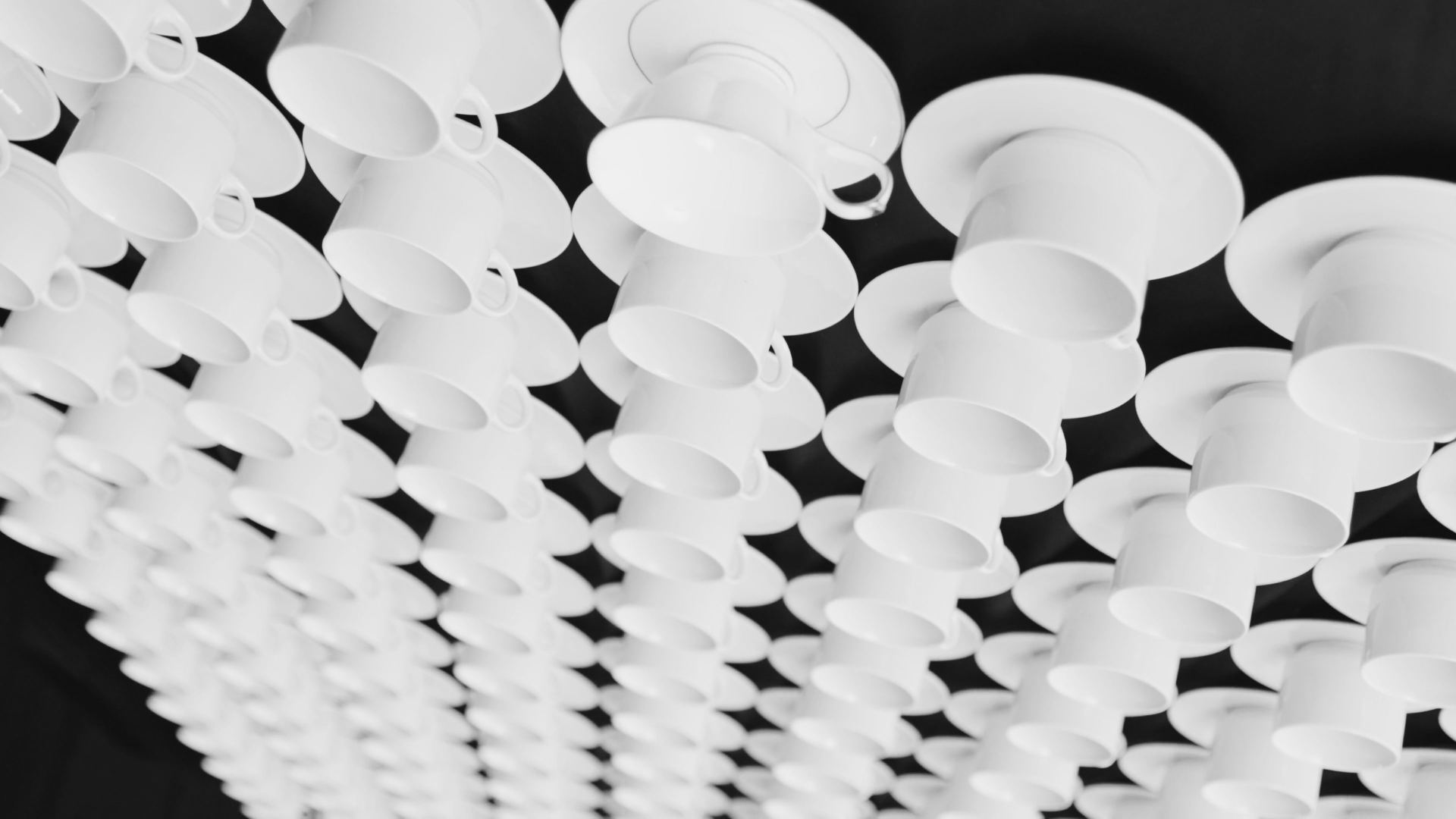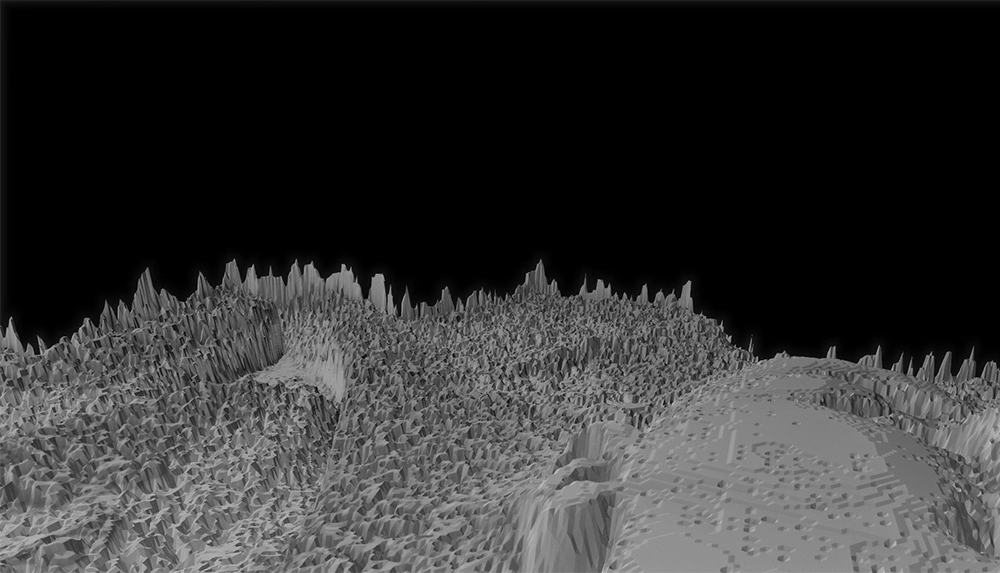
Exhibition catalogue can be downloaded here
SINIŠA RADULOVIĆ, Zenith
8.10 – 5.11.2020.
Gallery Podroom, Republic square 5/-1
Star Child Perspective
Svetlana Racanović, art historian, art critic…
List of exhibited works
Terraforming, video, 6’02’’, 2020
Immortality, video, 5’39’’, 2020
Zenith, video, 6’03’’, 2020
How to Completely Delete Yourself, video, 6’33’’, 2018
Dust, fotografija, 2018
Star Child Perspective
Svetlana Racanović, art historian, art critic
In their visual and virtual, narrative and symbolic level, the four video works by Siniša Radulović under symbolic names (How to Completely Delete Yourself, Zenith, Terraforming, Immortality) act like 4 plateaus, four essential levels on which, in a non-linear, unpredictable, illogical diagrammatic of their mutual relations and possible free, criss-crossed, “promiscuous” matching of the works and their titles, the microplan of the artist’s privacy and a dispersive macroplan of a hybrid, manipulated reality get mutually reflected, intersected, calibrated, decoded within an encompassing universalizing plan of existence to which the artist intentionally assigns the nature of elusiveness, incomprehensibility, otherworldliness and the incidence of a mystical, dark emptiness.
In an esoterically-mystical perception and experience of the world as an illusion, as a “time of sleep”, the veil of deception gets lifted by the means of power of the awakened awareness in the state of Silence or “Full Emptiness”, the state of liberation of “earthly” attachments, conditionings, captivity. In these video works, the vitalist concept gets turned into a dystopic vision of reality as a simulation steered within the universality of capitalist horizon. We have been pushed into a bare, cooled, disillusioned universe where the Capital has colonized and virtualized both the culture and our inner lives. That system absorbs the radical critique or the rebellion against the System as an inevitable “system error”, promoting it as its own liberal project while verifying the existence of freedom only through controlling and sabotaging its true conquest and limitless spreading. What gets limitlessly spread beyond all the veils od deception of this postcapitalist matrix, the endless and countless veils of deception, what gets spread like a background or a basis of all “system operations” – the occupation of corporeality and the appropriation of identity, the show of force and the creation of value, the accumulation of wealth, the compensation of pain and the substitute of happiness, the dazzling spectacle of all the knowledges and beliefs, the hypnotic powers of all the hopes and memories – everything that opens like a black hole in the space in these four video works is a barren, dark offing, a dark emptiness that swallows all the ideas, images and symbols, any meaning, and in which the liberation by truth remains an unreachable, permanently elusive secret – The truth is out there.
Without pretentious programming, paranoid or hysterical computer simulations, by the use of an eccentric link between the visual and textual, the artist encodes the world deprived of the centre, of gravity, orientation and consistence where self-replicating patterns and programmes erase the adventure of difference, change, new birth. These videos reveal melancholic signs or symbolic base of hypertrophied world of crowded and overstrained informatic networks, of a mediatized universe where entities and identities are nothing but bare, flashing images that keep pulsating, appearing and disappearing in the darkness of cyber-Plato’s cave, once a dark room of The Matrix in which Morpheus offered a red pill of truth and a blue pill of blissful ignorance to Neo.
Incorporeal bodies-images aimlessly float like hollow existences that echo a voice “like from another planet”, a narration marked by disturbing inhuman indifference, unstoppable and relentless as the voice of a destiny. It reduces all the hopes, doubts, rebellions, and changes down to the cooling point, to numbness, till they fall into a hypnotic sleep. In that state of hibernation, the redundance of all the spoken “religious dogma, beliefs and scientific truths, historical facts and conspiracy theories, paranormal phenomena and fictional worlds” gets infiltrated into the issue of reality like its revealed secret, and gets falsified as its unique truth. For the artist, that is the world of Schrödinger’s paradoxes where things simultaneously get closer and more distant, getting both static and movable, concrete and abstract, natural and artificial, clear and cryptic, superficial and profound, earthly and from outer space. There, a doubt resembles a belief and acceptance the denial. The artist creates these ontological and existential rotations by installing within the works an “omnipotent”, multiplied, decentred, inverted perspective that is adequate for the nature of decentred, dispersive world in the position of destabilized, dislocated man who perceives the state of accelerated change of status as regularity, the normality of his own existence. In these rotations and aimed oscillations between the naïve and the mystical, the sublime and the banal, a cold seriousness of the fact that we are witnesses of the final stage of a huge drama of our own existence, the drama which has even lost its dramatic feature, the shock effect, the dimension of a spectacle, is only the inside (or, actually, the face) of the artist’s playful yet deeply ironic sewing of his presentation of reality, which is the artist’s strategy of distancing from the very same reality he is presenting. In these rotations, the choice of perspective is no longer defined by the blue or red pill as an “easy” choice between slavery and the ability to get to know your enemy, between the position of a passive, involved/addicted consumer, awoken and liberated individual who doubts and who knows. In our post-truth and post-Matrix world, the red pills get swollen and sold by the conspiracy theorists, horny prophets and flexible guardians of memory, while the blue pill carries the possibility to Completely Delete Yourself: the “checking out”, getting off the network, an offline life, an exotic, almost alien life as a mode or a condition to a (self)conscious and purposeful living of one’s freedom. It is in those very multiplications and inversion of perspectives and positions, that the artist inverts the point of general atrophy, of fall, of slipping, into the zenith, into the point of growth, of personal consolidation, self-renewal, and duration. In a Kubrick-like twist, the shutting down of artificial power supplies and networks, a “new planet” is born, the one which is, from the perspective of the artist-parent, his Star Child: it is both a massive cosmic formation and an Earth-like structure, a human creation and a pure emotion, the sun of his intimate and artistic “astro-geography”. In the artist’s no longer mystical but intimate, family perspective, the extravagant homage to the closing scene of the Kubrick’s Odyssey also includes the immanent Kubrick-like ambivalence: the new, offline perspective, the innocent look, offers a source that has produced the look “from beyond”, the vision of regeneration, prolonging, lively duration in time (the artist would say – the immortality project) but also becomes a witness of unstoppable collapse of the “big world”, its evaporation, disappearance, maybe deafening, maybe silent shutting down, running on empty of his machines of illusions that use to make the world possible, although not alive.
Artists’statement
Starting from the fact that we live in the time of half-truth, the works presented at the exhibition entitled Zenith are created as hybrid forms – realities constructed out of the extremes. The newly created Truth is woven out of two hypothetical perspectives and two extremes, and thus it inevitably defies logic. In spite of asking universal existentialist questions, the starting point of the works is a newly acquired personal experience, the one which turns authorship into fatherhood, the one which take the author and his centre towards the mid-point of his family tree. On one side of the timeline is a new life, and on the other the notion of eternity and afterlife. The sources of information which later get homogenized, gravitate around remote points of naïve and unconscious, i.e. the omniscient and the mystical.
Combining religious dogma, beliefs and scientific facts, historical facts and conspiracy theories, paranormal phenomena and fictional worlds, a poetic narrative of a spiritual vibe is being created, contrasted to the cruel reality of capitalism and the materialistic world that we live in. Bearing in mind that child is not capable of completely grasping reality and its content, while on the other hand we cannot clearly grasp the metaphysical notion of finality, these works never display what the narrator is talking about, the content is completely absent and the notion of time redefined. The only mythology which is firmly founded is the author’s family history.
The chronology of the family tree gets deconstructed and transformed into a loop which displaces the roles of the subject in perpetuity. The narrator is a child but at the same time also a software, an algorithm which presents us with the truth of a new, dystopian world that we live in. And while spectator is being suggestively presented with the truth as an unchangeable state, the narrator is actually placed in the position of Schrödinger’s cat, he is at the same time the father and the son, both digital and analogue, a viewer and the author, both dead and alive.
Siniša Radulović is born in 1983 in Podgorica, Montenegro. Graduated from the Faculty of Fine Arts, Cetinje, Montenegro, where he also completed his master studies in 2008. He won “Milčik” – Young Visual Artist Award (2017), Grand Prix at Herceg Novi Winter Art Salon (2016), and awards for painting (2011) and video (2016) at Montenegrin Art Salon “13 November”, Cetinje. He lives and works in Podgorica.
He has works in several private and public collections including: October Salon Collection (Cultural Centre of Belgrade), Art Collection Deutsche Telekom, National Museum of Montenegro Collection, University of Montenegro Collection, Luciano Benetton Collection, Federculture Rome Collection, Center of Contemporary art of Montenegro Collection, Montenegrin Academy of Sciences and Arts Collection. More information about the author at: www.sinisa.me
Texts: Svetlana Racanović, Author
Curator of the exhibition: Zorana Đaković Minniti
Translation: Author, Vesna Radovanović
Installement: CCB
Supported by the City of Belgrade – Secretary for Culture and Ministry of Culture and Information of the Republic of Serbia
